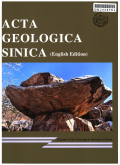- 钛学术文献服务平台 \
- 学术期刊 \
- 基础科学期刊 \
- 天文学、地球科学期刊 \
- 地质学报(英文版)期刊 \
Intrusion-related Gold Deposits in Egypt
Intrusion-related Gold Deposits in Egypt
基本信息来源于合作网站,原文需代理用户跳转至来源网站获取
摘要:
Intrusion-related gold deposits (IRGDs) occur in the Eastern Desert (ED) of Egypt within magmatic districts that are exploited for tungsten and tin mineralization. IRGDs and intrusion-related rare metal deposits (IRRMDs) are almost invariably linked with the late to post collisional Younger Granites (YGs) that have three successive phases (Ⅰ,Ⅱ and Ⅲ). At ~635–630 Ma, the ED underwent a transition in deformation style from compressional to extensional and a switch from subduction with crustal thickening to delamination with crustal thinning. This transition was concurrent with the emplacement of a short magmatic pulse (~635–630 Ma) that represents a transition between orogenic gold deposits and IRGDs. K-rich calc alkaline granites (phase Ⅰ and Ⅱ of the YGs) hosting IRGDs like the Hangalia deposit were emplaced during the time span 630–610 Ma. Alkaline magmatism began at 610 Ma, coexisting with the K-rich calc-alkaline magmatism over the 610–590 Ma time span, where the Fawakhir (598 ± 3 Ma) and Um Had (596 ± 2 Ma) granites that host the IRGDs were emplaced. In time, the alkaline magmatism became more alkaline giving rise to phase Ⅲ of the YGs that hosts IRRMDs. A distinct metallogenic epoch comprising both IRGDs and IRRMDs, was undergoing extreme growth at~600 Ma.

推荐文章
Metallogenic controls on the granite-related W–Sn deposits in the Hunan–Jiangxi region, China: evide
W–Sn deposits
South China
Zircon trace element chemistry
Ti-in-zircon thermometry
Oxygen fugacity
Using electrogeochemical approach to explore buried gold deposits in an alpine meadow-covered area
Electrogeochemistry
Buried mineral deposit
Ideal anomaly model
Alpine-meadow covered
Ihunze
Geological and geochemical characteristics of the Baogudi Carlintype gold district (Southwest Guizho
Elemental geochemistry
Fluid inclusions
Stable isotopes
Carlin-type gold deposits
Baogudi gold district
Southwestern Guizhou
Geochemistry and geochronology of Late Jurassic and Early Cretaceous intrusions related to some Au (
Yanshannian magmatism
Subduction-modified lithosphere
Au (Sb) deposits
Southern Anhui
South China
内容分析
关键词云
关键词热度
相关文献总数
(/次)
(/年)
引文网络
引文网络
二级参考文献 (0)
共引文献 (0)
参考文献 (97)
节点文献
引证文献 (0)
同被引文献 (0)
二级引证文献 (0)
1981(1)
- 参考文献(1)
- 二级参考文献(0)
1982(1)
- 参考文献(1)
- 二级参考文献(0)
1983(1)
- 参考文献(1)
- 二级参考文献(0)
1984(1)
- 参考文献(1)
- 二级参考文献(0)
1985(4)
- 参考文献(4)
- 二级参考文献(0)
1987(4)
- 参考文献(4)
- 二级参考文献(0)
1988(1)
- 参考文献(1)
- 二级参考文献(0)
1989(1)
- 参考文献(1)
- 二级参考文献(0)
1992(3)
- 参考文献(3)
- 二级参考文献(0)
1993(2)
- 参考文献(2)
- 二级参考文献(0)
1994(4)
- 参考文献(4)
- 二级参考文献(0)
1995(2)
- 参考文献(2)
- 二级参考文献(0)
1996(1)
- 参考文献(1)
- 二级参考文献(0)
1997(1)
- 参考文献(1)
- 二级参考文献(0)
1998(2)
- 参考文献(2)
- 二级参考文献(0)
1999(2)
- 参考文献(2)
- 二级参考文献(0)
2000(2)
- 参考文献(2)
- 二级参考文献(0)
2001(3)
- 参考文献(3)
- 二级参考文献(0)
2002(6)
- 参考文献(6)
- 二级参考文献(0)
2003(3)
- 参考文献(3)
- 二级参考文献(0)
2004(2)
- 参考文献(2)
- 二级参考文献(0)
2006(4)
- 参考文献(4)
- 二级参考文献(0)
2007(4)
- 参考文献(4)
- 二级参考文献(0)
2008(4)
- 参考文献(4)
- 二级参考文献(0)
2009(5)
- 参考文献(5)
- 二级参考文献(0)
2010(4)
- 参考文献(4)
- 二级参考文献(0)
2011(6)
- 参考文献(6)
- 二级参考文献(0)
2012(3)
- 参考文献(3)
- 二级参考文献(0)
2013(5)
- 参考文献(5)
- 二级参考文献(0)
2014(2)
- 参考文献(2)
- 二级参考文献(0)
2015(3)
- 参考文献(3)
- 二级参考文献(0)
2016(1)
- 参考文献(1)
- 二级参考文献(0)
2017(2)
- 参考文献(2)
- 二级参考文献(0)
2018(6)
- 参考文献(6)
- 二级参考文献(0)
2019(1)
- 参考文献(1)
- 二级参考文献(0)
2021(0)
- 参考文献(0)
- 二级参考文献(0)
- 引证文献(0)
- 二级引证文献(0)
引文网络交叉学科
相关学者/机构
期刊影响力
地质学报(英文版)
主办单位:
中国地质学会
出版周期:
双月刊
ISSN:
1000-9515
CN:
11-2001/P
开本:
16开
出版地:
北京复外百万庄26号
邮发代号:
创刊时间:
1922
语种:
eng
出版文献量(篇)
3189
总下载数(次)
0
总被引数(次)
14369
期刊文献
相关文献
推荐文献
- 期刊分类
- 期刊(年)
- 期刊(期)
- 期刊推荐
力学
化学
地球物理学
地质学
基础科学综合
大学学报
天文学
天文学、地球科学
数学
气象学
海洋学
物理学
生物学
生物科学
自然地理学和测绘学
自然科学总论
自然科学理论与方法
资源科学
非线性科学与系统科学
地质学报(英文版)2022
地质学报(英文版)2021
地质学报(英文版)2020
地质学报(英文版)2019
地质学报(英文版)2018
地质学报(英文版)2017
地质学报(英文版)2016
地质学报(英文版)2015
地质学报(英文版)2014
地质学报(英文版)2013
地质学报(英文版)2012
地质学报(英文版)2011
地质学报(英文版)2010
地质学报(英文版)2009
地质学报(英文版)2008
地质学报(英文版)2007
地质学报(英文版)2006
地质学报(英文版)2005
地质学报(英文版)2004
地质学报(英文版)2003
地质学报(英文版)2002
地质学报(英文版)2001
地质学报(英文版)2000
地质学报(英文版)1999

 免费查重
免费查重










